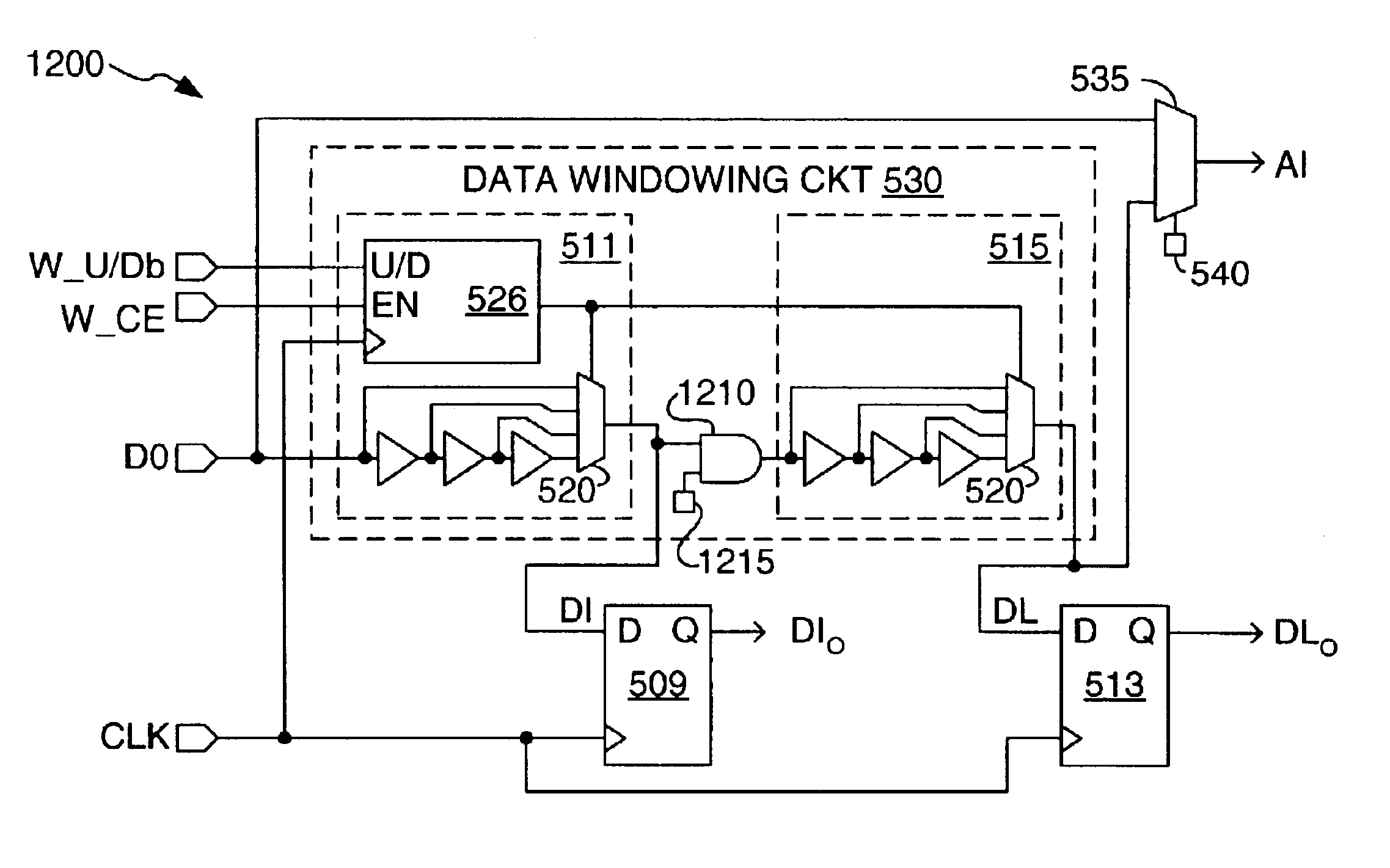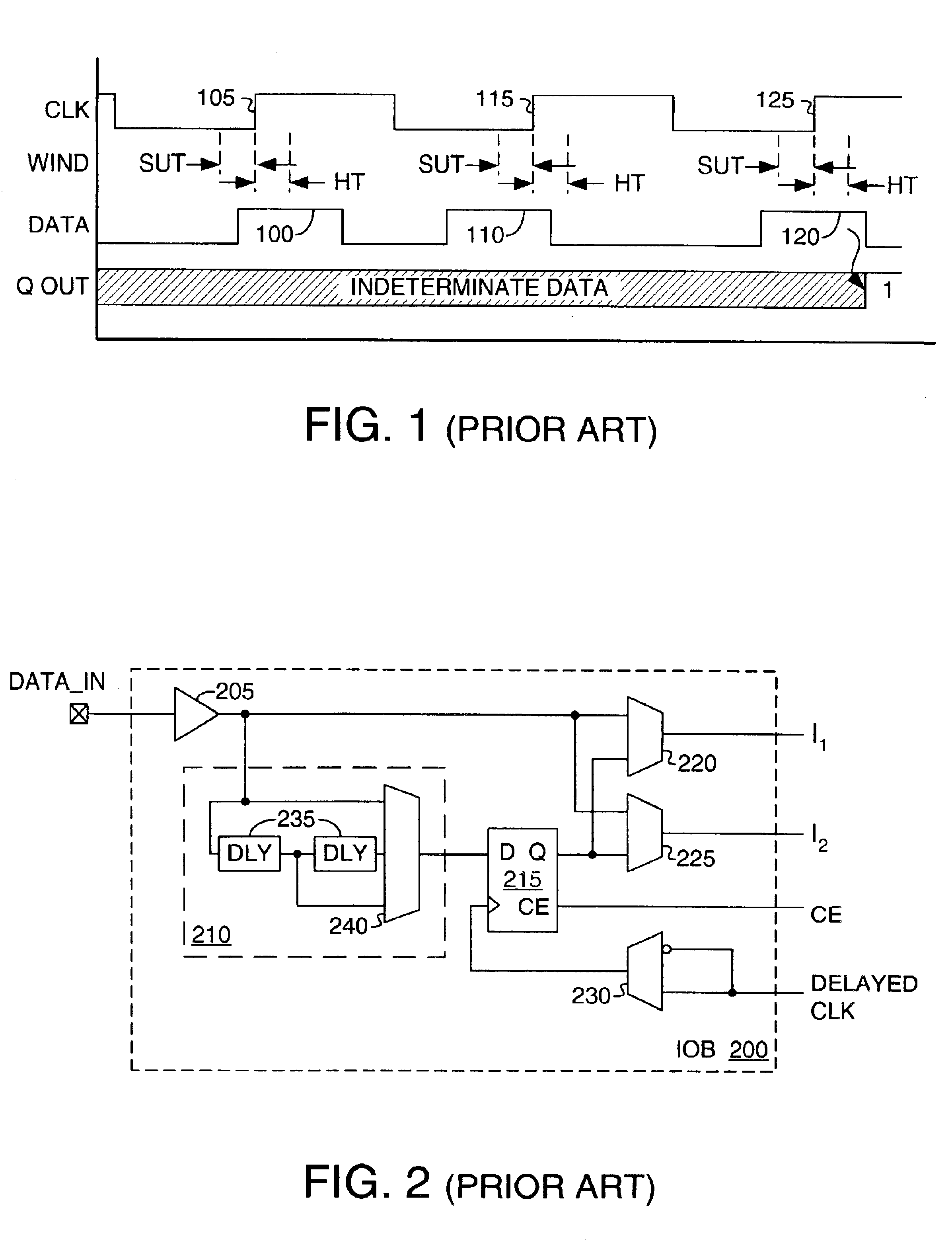Windowing circuit for aligning data and clock signals
a clock signal and window circuit technology, applied in the field of integrated circuits, can solve the problems of difficult to avoid set-up and hold-time problems, circuit b>300/b> latching incorrect data, and unnecessarily limit the maximum operating frequency of iob b>200/, etc., and achieve precise per-bit data alignment
- Summary
- Abstract
- Description
- Claims
- Application Information
AI Technical Summary
Problems solved by technology
Method used
Image
Examples
Embodiment Construction
FIG. 5 depicts a data alignment circuit 500 adapted in accordance with one embodiment of the invention to precisely align a data signal on a data input node D0 with a clock signal on a clock input node CLK. In one embodiment, alignment circuit 500 is a portion of an input / output block of a field-programmable gate array (FPGA), or some other type of programmable logic device. Alignment circuit 500 includes three sequential storage elements, each of which includes a data terminal connected to data input node D0. The first sequential storage element 505 connects to data input node D0 via a first direct signal path that includes a first adjustable delay circuit 507; the second sequential storage element 509 includes a second d at a terminal connected to input node D0 via a second direct signal path that includes a second adjustable delay circuit 511 and the first delay circuit 507; and the third sequential storage element 513 connects to data input node D0 via a third direct path that i...
PUM
 Login to View More
Login to View More Abstract
Description
Claims
Application Information
 Login to View More
Login to View More - R&D
- Intellectual Property
- Life Sciences
- Materials
- Tech Scout
- Unparalleled Data Quality
- Higher Quality Content
- 60% Fewer Hallucinations
Browse by: Latest US Patents, China's latest patents, Technical Efficacy Thesaurus, Application Domain, Technology Topic, Popular Technical Reports.
© 2025 PatSnap. All rights reserved.Legal|Privacy policy|Modern Slavery Act Transparency Statement|Sitemap|About US| Contact US: help@patsnap.com



